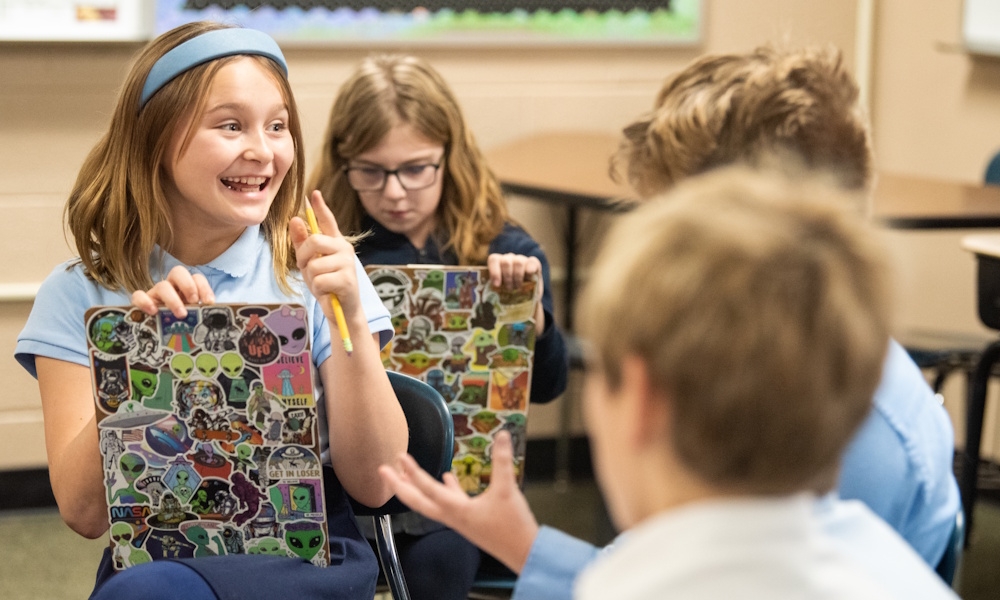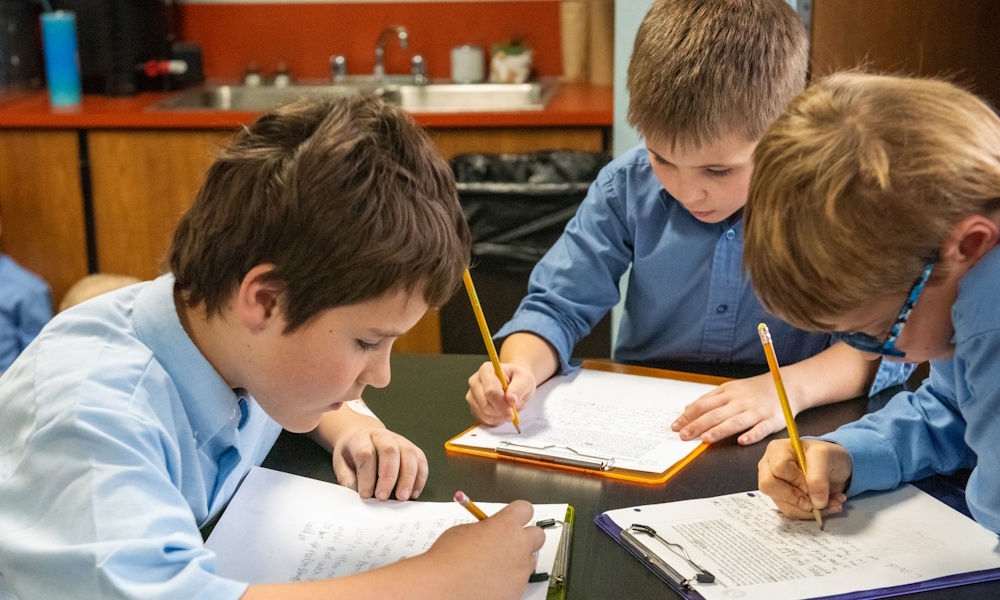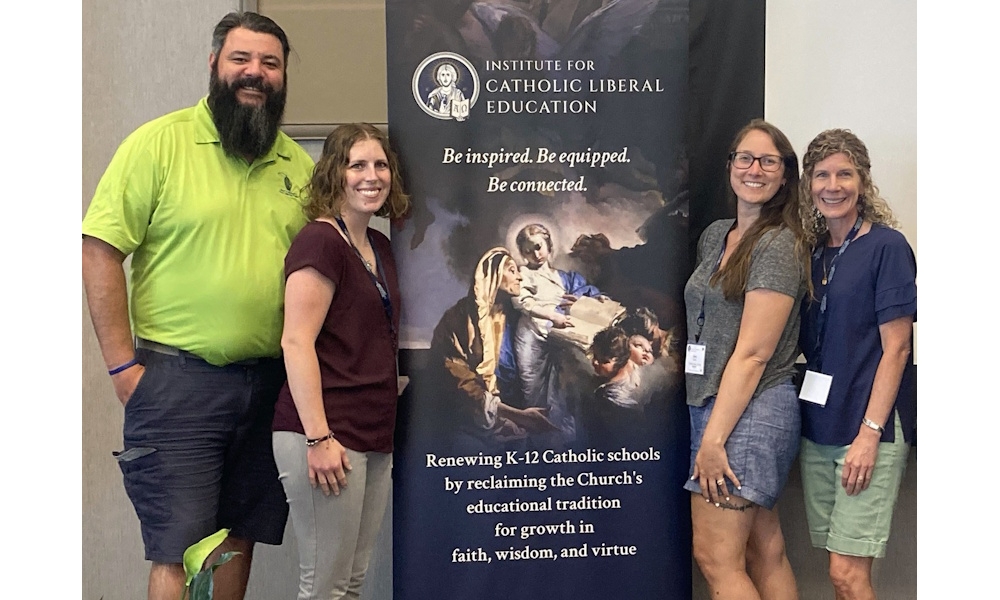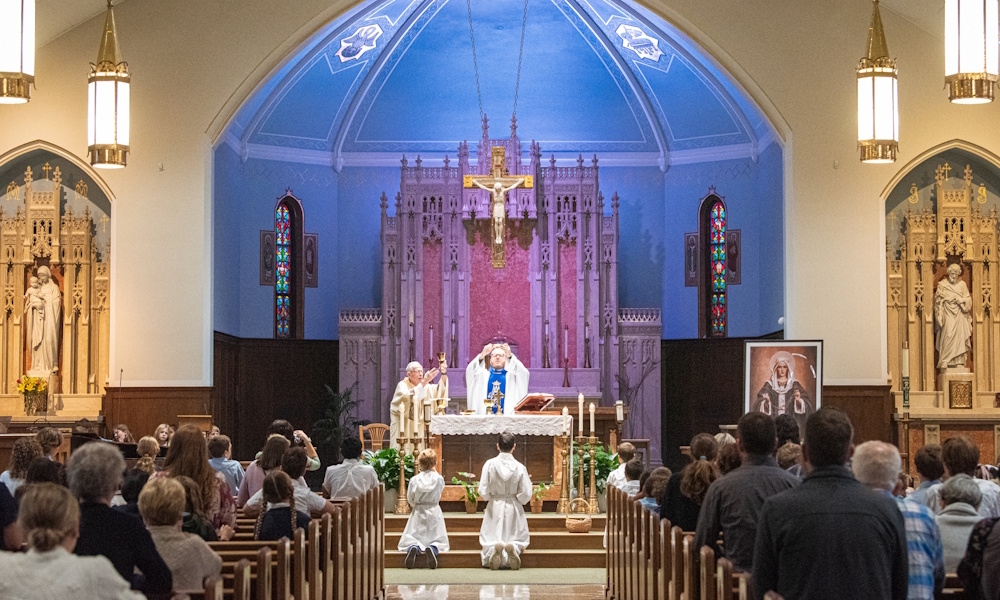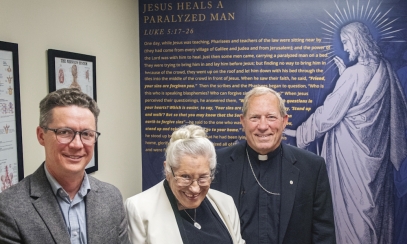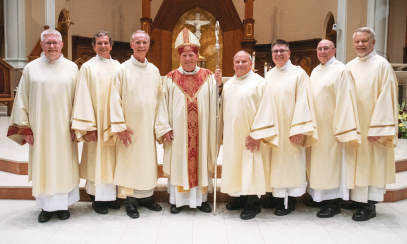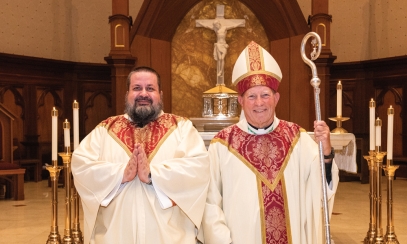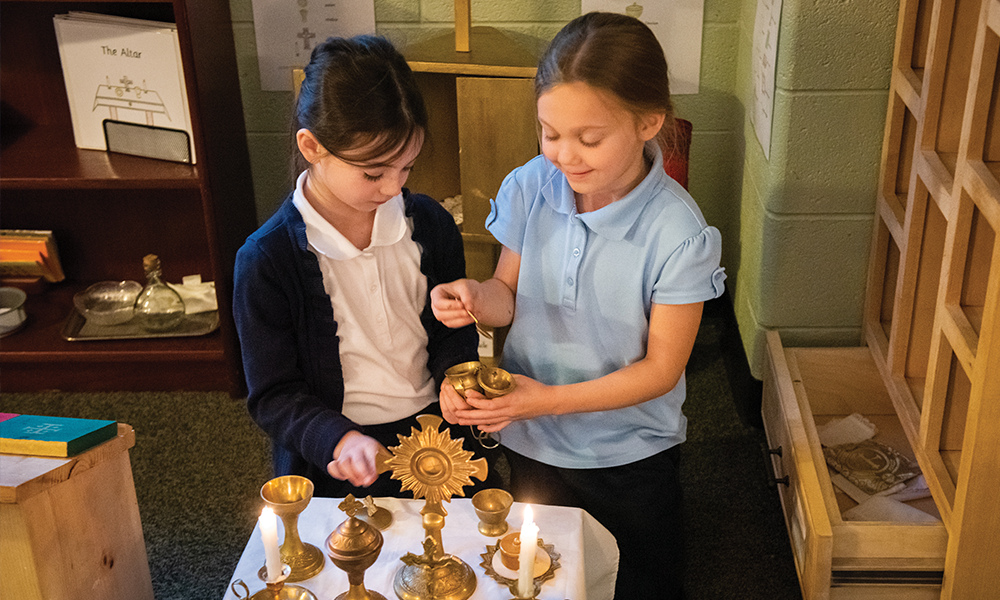
The joy of learning
St. Brigid Catholic School’s renewal through the Institute of Catholic Liberal Education
St. Brigid Catholic School’s renewal through the Institute of Catholic Liberal Education
At first glance, it may not seem like much has changed at St. Brigid Catholic School. But look closer, and you’ll see it. Hear it. Feel it.
Kindergarteners quietly prepare a model altar in the Atrium. Fourth graders are discussing the Council of Trent. Fifth graders are reciting the Gettysburg Address. In their monthly “household” groups, middle school girls and their female teachers are sharing difficult moments and pondering how God sees them.
It feels... joyful.
Two years ago, St. Brigid partnered with the Institute of Catholic Liberal Arts (ICLE) to transition towards a classical curriculum and deepen their Catholic identity. This shift has enhanced not only academic strides, but also personal and spiritual growth for students, family and staff.
Joy, wonder and growth
The seed was planted when several St. Brigid teachers attended a Michigan Association of Non-public Schools conference session on classical education. After many discussions and research, they shared articles about ICLE and its results.
“What I read was exactly what we wanted: to be more mission-driven, to have more Catholic identity, to integrate subjects more, provide more joy and wonder for our students, less homework and more discussion, deeper understanding of topics … and families sold on the mission of the school,” said Laura Wilkowski, principal of St. Brigid Catholic School.
Father Stephen Blaxton, now pastor at St. Brigid, learned about ICLE while serving as the chairman for the Catholic School Council’s Catholic identity and academic excellence subcommittee.
“I was really inspired by the vision of it, which is a Catholic vision,” he said, describing it as beautiful, holistic and joyful. “It’s about cultivating hearts and minds ... [for students] to be free in their capacity to learn and pursue the truth.”
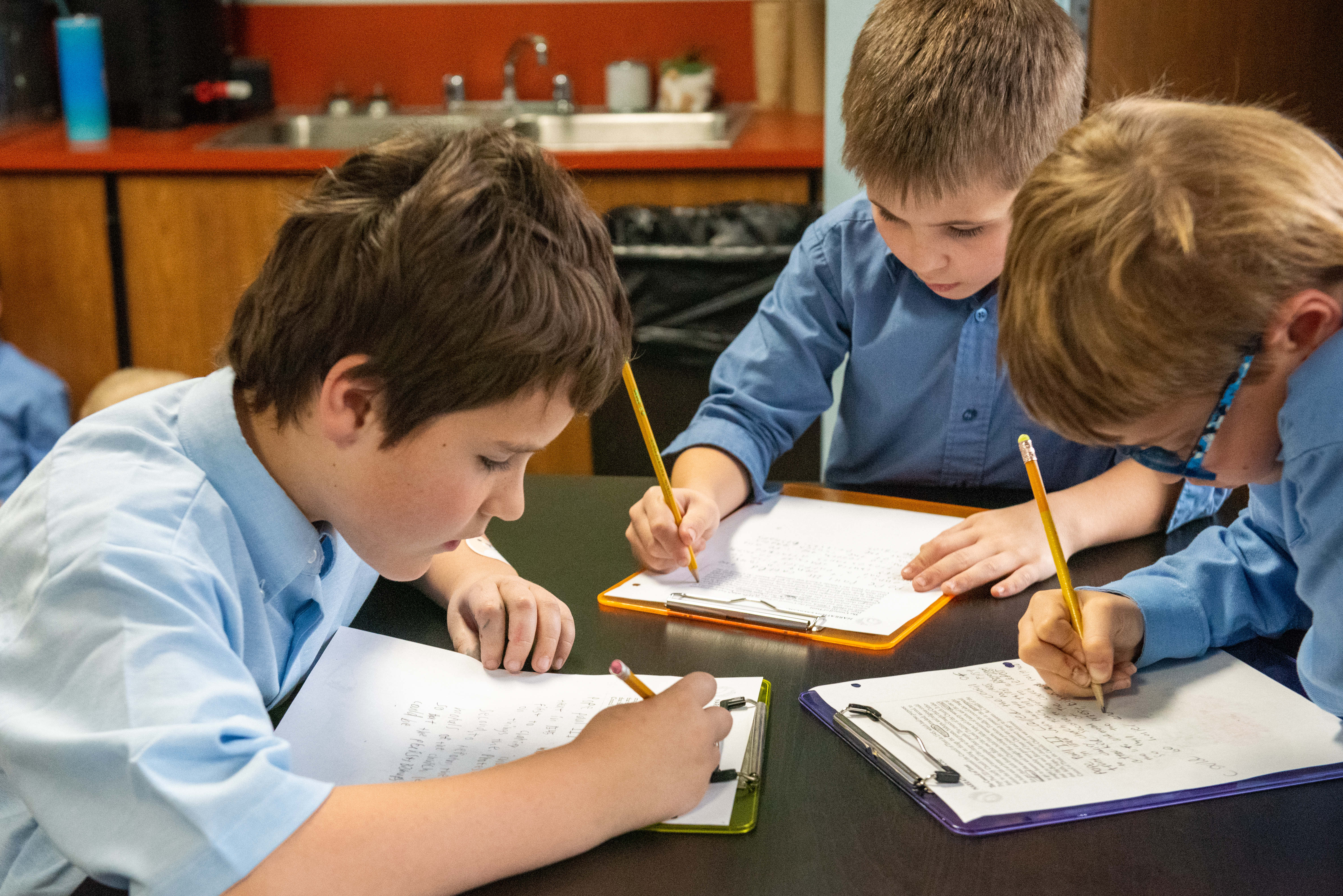
‘Liberal arts’ comes from the Latin liber, meaning ‘to free’.
“The classical liberal arts are about teaching those tools that allow for people to be free to think and master any field of study,” he said.
With financial support from the Catholic School Council and the Diocese, St. Brigid became the first school in the Diocese to implement this voluntary educational model, partnering with ICLE in 2023 to transition over three years. They began with more discussion-based lessons, a structured literacy approach and changed their math program to one that encourages depth over breadth of concepts.
“As a result, our students have never read better nor understood math concepts so well,” Laura said.
Using Illustrative Math, kindergarteners learn to visualize the concept that the sum of any two digits is less than or equal to 10.
“I had a first grader see a math problem, 39 plus 99, and quickly give the answer, 138,” Laura said, noting that he explained he moved one from 39 to the 99, making 100 to easily add 38. “That's deep understanding.”
Student performance has improved across the board.
“Our structured literacy approach is designed to help the developing reader to be successful. As a result, all students are reading, writing and spelling better,” Laura said. “[Students] often practice these skills through centers-based games and activities that are fun but meaningful.”
In two years, St. Brigid has switched all their textbooks and materials to ICLE, carefully discerning how to enhance the great work already being done. They also expanded their Catechesis of the Good Shepherd (CGS) Atrium.
Socratic circles and sketchbooks
A favorite for St. Brigid fifth graders is Socratic circles, one of many ICLE practices Sara Graves has implemented.
In a Socratic circle, students are split into an inner and outer circle. The students read a text, often poetry, and are given 10 minutes to write responses, notes and questions. Then, they take turns discussing the text and taking notes to provide feedback.
“The discussions they have are so rich,” Sara said. “We’ve also been able to practice skills of taking turns talking, not cutting people off and how to respectfully disagree.”
One December day, they wondered together what the elements in Robert Frost’s poem “Fire and Ice” could represent. The students eagerly dissected the text and invited each other to share their perspectives.
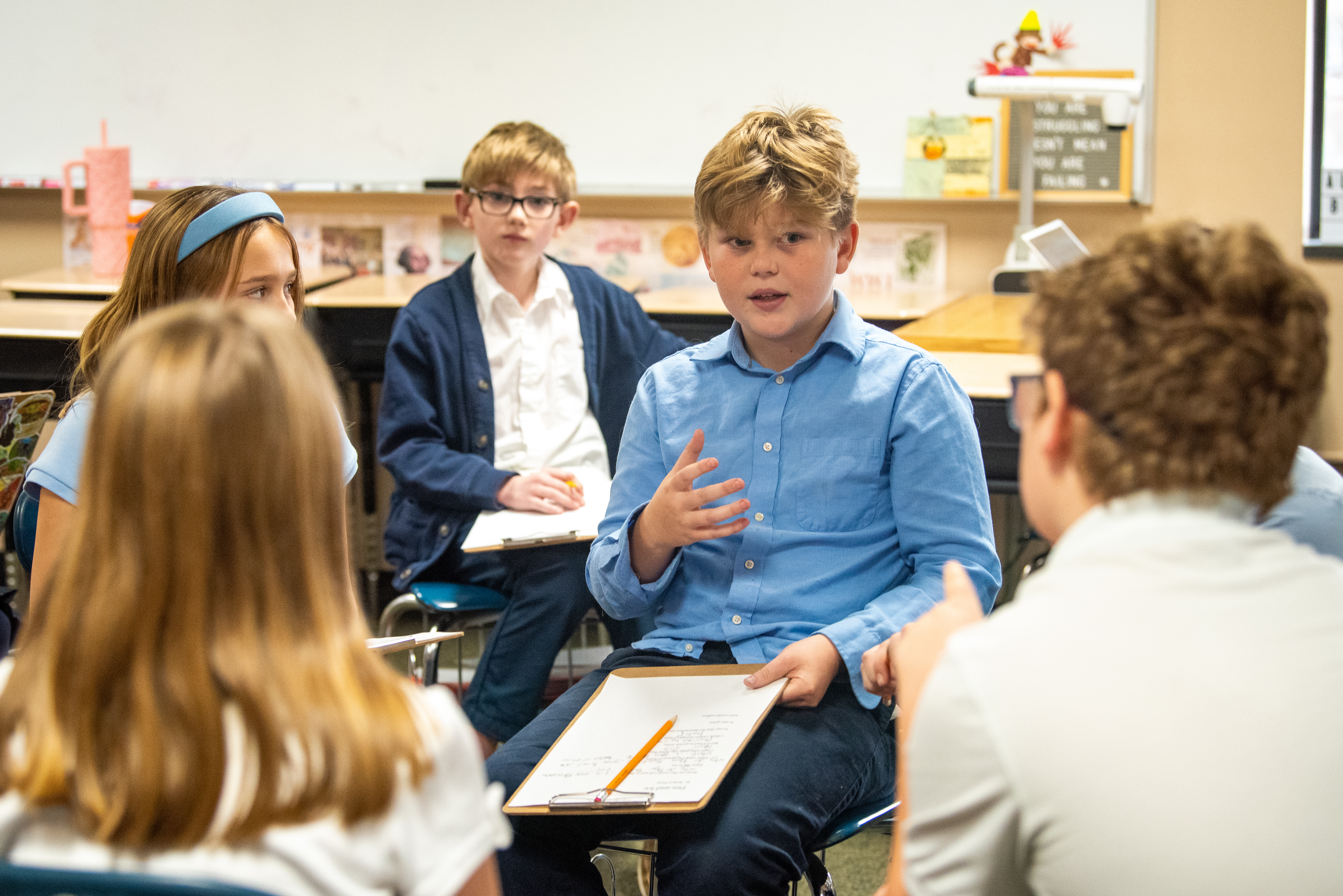
The fifth graders also keep nature journals in science. Usually once a week, they go outside with a prompt, like ‘zoom in and sketch something in great detail.’ The students draw, take careful notes and ask questions. They study how nature changes with the seasons and share what they see with each other.
Like much of ICLE, they are learning to slow down to truly observe and think about what they are seeing rather than rushing through material. This allows them to go deeper into subjects and follow student interests.
"It’s ... seeing each student as a perfect creation of God and trying to guide them to be who God wants them to be,” Sara said. “And the students are doing the same for me. Every day, I know I'm growing closer to who I'm meant to be through the work I'm doing with them– and having the freedom to do that in this school.”
Faith across curriculum
An educator for 35 years, Kathy Schilling believes one of the biggest benefits of ICLE is the opportunity for cross-curricular learning. She joined St. Brigid at the beginning of their ICLE renewal and has loved it.
Each month, the entire school commits to memorizing a verse from Scripture or a prayer. Younger students like Kathy’s third grade class copy it to practice their handwriting.
“We’re trying to make things more hands-on, more meaningful, more integrated into different areas,” she explained.
Picture studies are another unique feature of ICLE. Kathy will project a work of art for the class to not just view, but contemplate.
“They talk about the things that they notice, things that they wonder,” she said. “We try to break it apart and analyze all the different things.”
Kathy compared it to making scientific observations, encouraging students to look closer and ask questions. As students learn about sacred art and symbolism, they discuss what the artist may be trying to communicate. Crucially, these are class-wide conversations.
“It's always interesting to hear their interpretations of things. They’re very observant,” she said. While it took a while for some of the students to feel comfortable sharing with the class, a few months into the school year everyone is eager to contribute to the conversation.
“In order to prepare for the future ... you need to know how to learn, and you need to know how to engage,” Kathy said. "That's what ICLE does.”
Reading and thinking critically
Middle school literature and history teacher Christopher Wakeman agrees with Kathy.
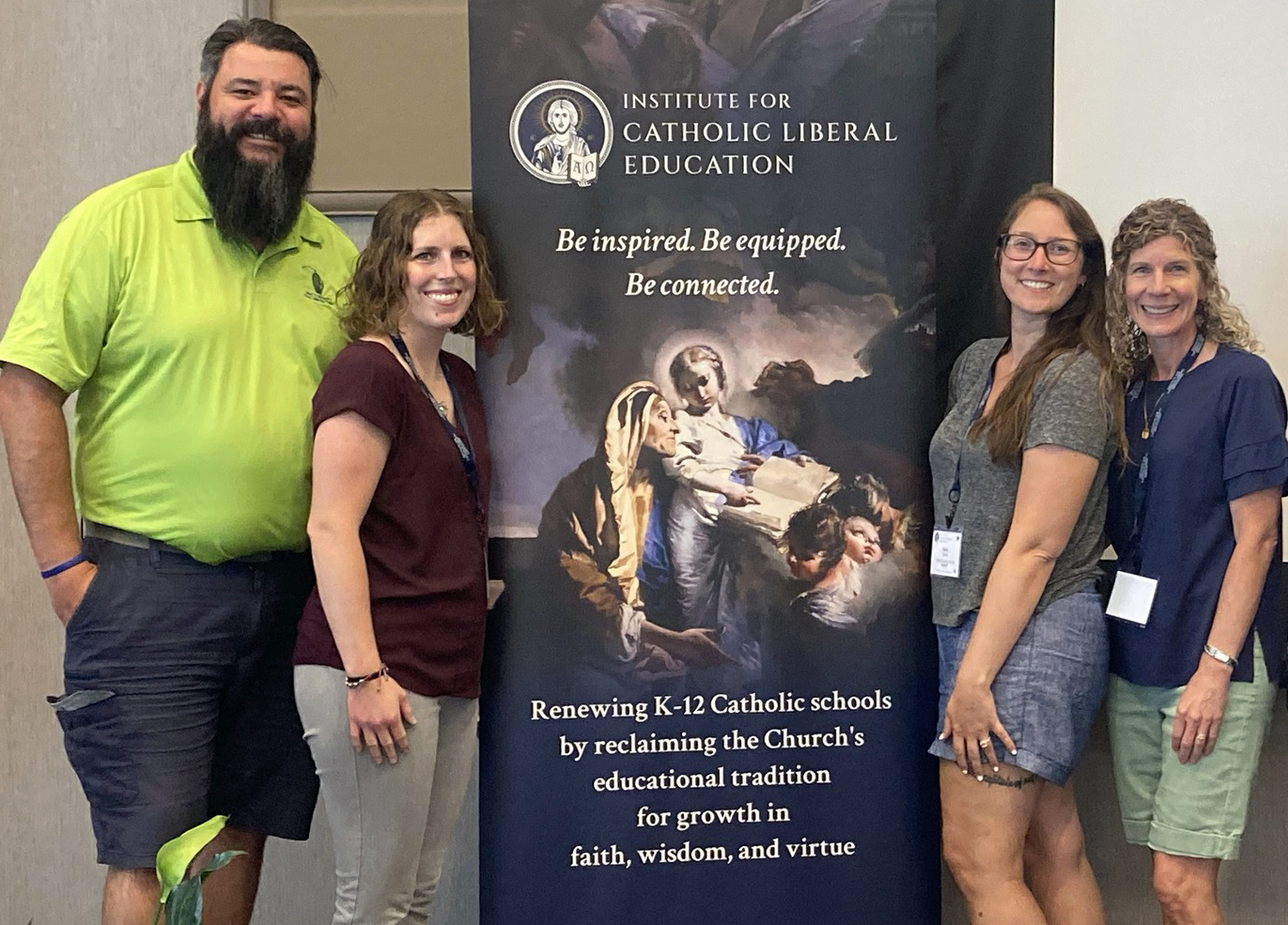
This year, St. Brigid implemented a new history curriculum using “The Story of Civilization” as the main text. This series presents history through a Catholic lens and weaves together biblical, Church and secular history.
“We have to talk about the difficult questions at their level, about how we justify and reconcile things,” he said.
Students learn not only about key figures and key concepts, but discover how they are all interconnected. Christopher focuses on ensuring students understand the context and why certain events happened.
“I'm not as worried about whether my students know the day that Alexander Hamilton and Aaron Burr had their duel," he noted. “I am interested to know ... if they can tell that story and understand the humanity of it.”
Christopher also noted the advantages of the critical thinking and reading comprehension skills students learn. The fruit of this work has been evident in many forms, including enhanced performance on standardized tests. Honing these skills and solidifying a faithful foundation both in a student’s academic and spiritual life reaps benefits for a lifetime.
“[Middle school] is such a pivotal time. ... This is a time when they grow and change a lot,” he said.
Spiritual formation
The ICLE renewal also supports middle schoolers’ social-emotional and spiritual development.
“The classical schools we visited [while researching ICLE] have their students meet in what they call a ‘household’ once a month to build up their relationship with God and one another,” said LeAnne Osborn, who serves as the middle school theology teacher and coordinator of Catholic identity.
At St. Brigid, the students are split by gender to do a Bible study program offered through Life Teen.
“Honestly, I’m so excited about so much of what’s going on here!” LeAnne continued. “This morning, we had [Eucharistic] Adoration and Father Stephen was available for confession for all of our middle school students. I’m so thankful for the renewal of Catholic identity happening in our schools!”
Their Catholic identity is also deepening through an expanded Catechesis of the Good Shepherd (CGS) Atrium. This year, St. Brigid became the first Catholic school in the Diocese of Saginaw to offer a Level III Atrium for fourth through sixth graders. Students in the fifth grade or younger during this school year will experience all three levels of CGS during their time at St. Brigid.
CGS is a Montessori-style approach to experiencing religion with children, providing a peaceful environment (Atrium) to encounter God.
While CGS is offered at several Catholic schools and parishes and is not affiliated with ICLE, many classical schools have at least a Level I Atrium. There is also much overlap in the teaching methodologies. LeAnne noted that the formation she received to be a CGS catechist has changed the way she teaches students of all ages.
“It’s not just pouring out information, but really trying to sit before the mystery of God with the people I’m with,” she said. “It’s real, this mystery that is our faith. It's not just a dead letter or dry information that we're trying to pass down. It's this living, dynamic, salvific reality.”
With young children, the Atrium creates an environment where they desire to grow in relationship with Christ.
“I would say, for middle school, they are in a prime place for that again,” LeAnne said. “We want middle school kids to make that faith their own."
As studies show former Catholics often disaffiliate around age 13, the chance to fully own one’s faith is crucial.
And it begins with absolute respect for the child in front of you, LeAnne said.
“We're simply presenting the True, the Good, the Beautiful in Scripture and in liturgy,” she said. “We're not telling them they have to believe this. We're just saying this is ... Scripture. This is what Jesus said. … [Then we] give them space to articulate their own response. You're not telling them how they should respond. You're giving them the source-- and that's the classical method."
Free to seek
Halfway through St. Brigid’s renewal, Laura is excited to see where they are going.
“I love that teachers realize that this conversion of the school starts with a conversion of heart,” she said. “Not only does the change make learning more joyful for students, but it is also more joyful for the teachers.”
Students are engaged in their learning, less stressed by homework and deeply reflective, she noted. Some students are considering the priesthood. Faith has been integrated into all areas of the curriculum, and all students through fifth grade spend time in the Atrium weekly.
“I am delighted every time I joyfully see students share some deep reflection on their faith or expound on an academic concept,” Laura said.
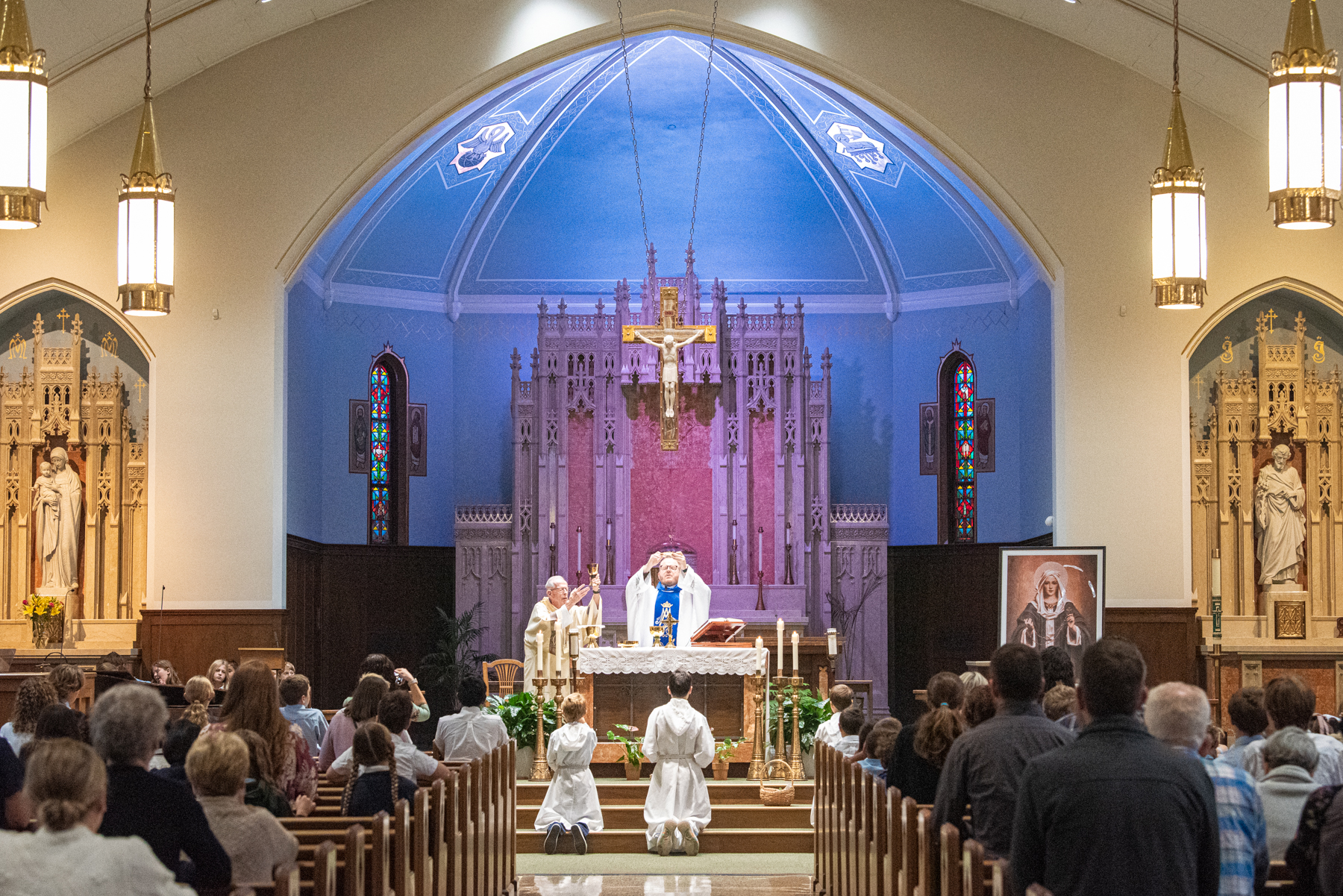 This fall, the entire school prayed a novena (nine-day prayer) before consecrating St. Brigid Catholic School to Our Lady of the Rosary on her Oct. 7 feast day. Father Stephen blessed a large painting of Our Lady of the Rosary, which now hangs in the lobby with a kneeler, encouraging all to ask our Blessed Mother to pray on our behalf.
This fall, the entire school prayed a novena (nine-day prayer) before consecrating St. Brigid Catholic School to Our Lady of the Rosary on her Oct. 7 feast day. Father Stephen blessed a large painting of Our Lady of the Rosary, which now hangs in the lobby with a kneeler, encouraging all to ask our Blessed Mother to pray on our behalf.
“Our Lady provides a role model for all of us on how to see and follow Jesus,” Laura said.
“It all comes down to the person of Jesus,” Father Stephen said. “What does he want for education?”
After all, the Catholic Church has centuries of classical liberal arts schools that have produced countless scholars and saints.
“Jesus is the person we're all seeking when we're learning, even if we don't know it,” Father Stephen said. "He's the source of all truth. [This is] a vision for how to pursue education and help form minds to be free, because ultimately, you want to put them in touch with that person: Jesus.”
To learn more about St. Brigid Catholic School, diocesan schools offering ICLE or the benefits of a Catholic education, please visit GreatLakesBayCatholicSchools.com
To learn more about St. Brigid Catholic School, diocesan schools offering ICLE or the benefits of a Catholic education, please visit GreatLakesBayCatholicSchools.com

